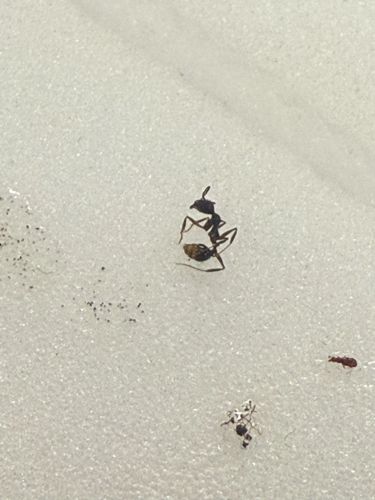Ant
Scientific Name: Formicidae
Order & Family: Hymenoptera, Formicidae
Size: Typically from 2 mm to 25 mm (0.08 to 1 inch), depending on the species.

Natural Habitat
Ants are found in nearly all terrestrial environments worldwide. They build nests in soil, under rocks, in wood, cavities of plants, or even indoors within structures.
Diet & Feeding
Highly varied depending on the species. Many are omnivores, feeding on nectar, seeds, fungi, insects (dead or alive), and honeydew produced by aphids. Some are specialized predators or scavengers.
Behavior Patterns
Ants are social insects living in colonies ranging from a few dozen to millions. They exhibit complex social structures with distinct castes (queen, workers, males). Workers perform tasks like foraging, nest maintenance, and caring for young. They communicate through chemical signals (pheromones) and tactile interactions.
Risks & Benefits
Potential risks include property damage (e.g., carpenter ants), contamination of food, and painful stings/bites from some species (e.g., fire ants). Benefits include aeration of soil, seed dispersal, nutrient cycling, and pest control (preying on other insects).
Identified on: 10/3/2025